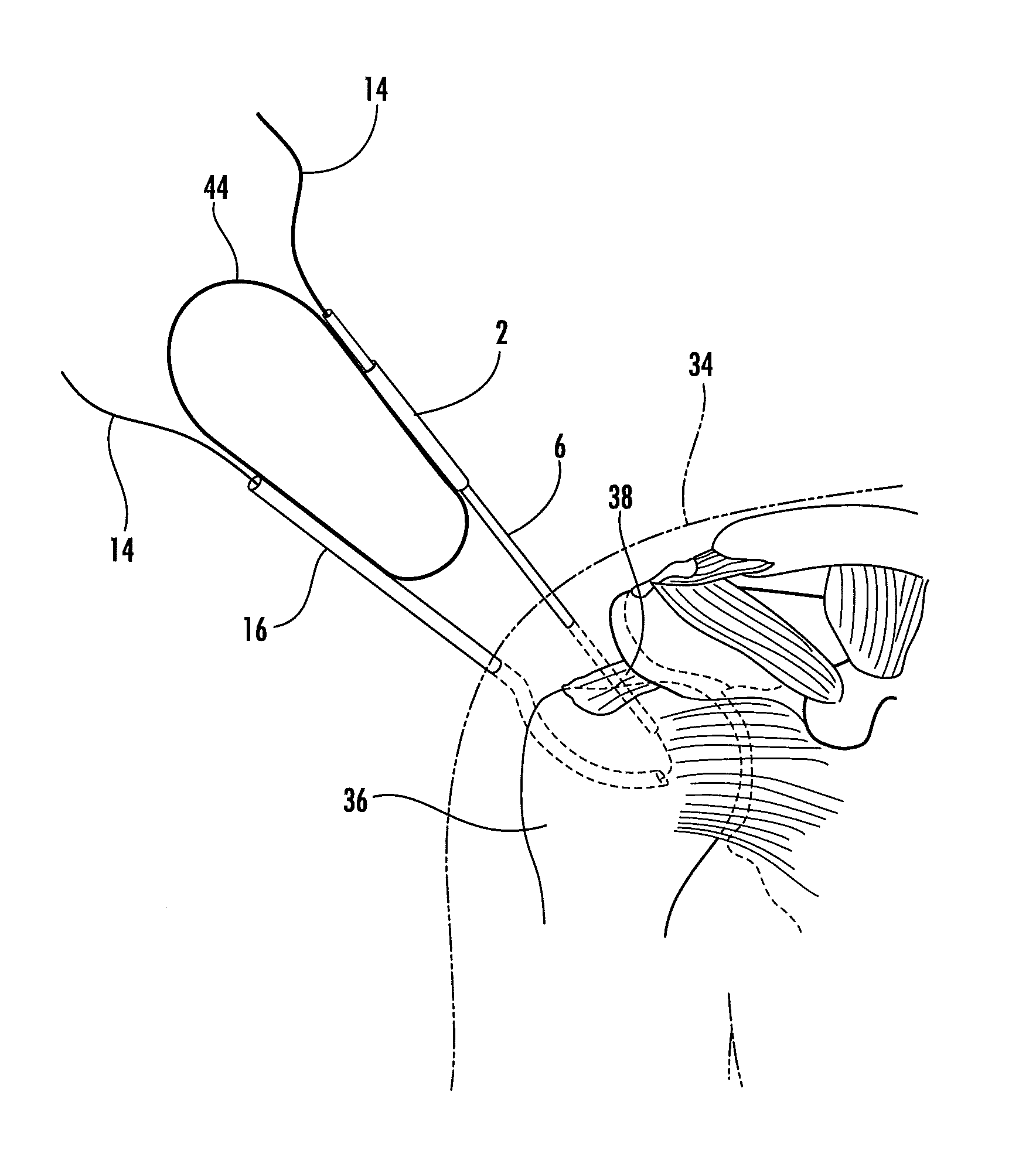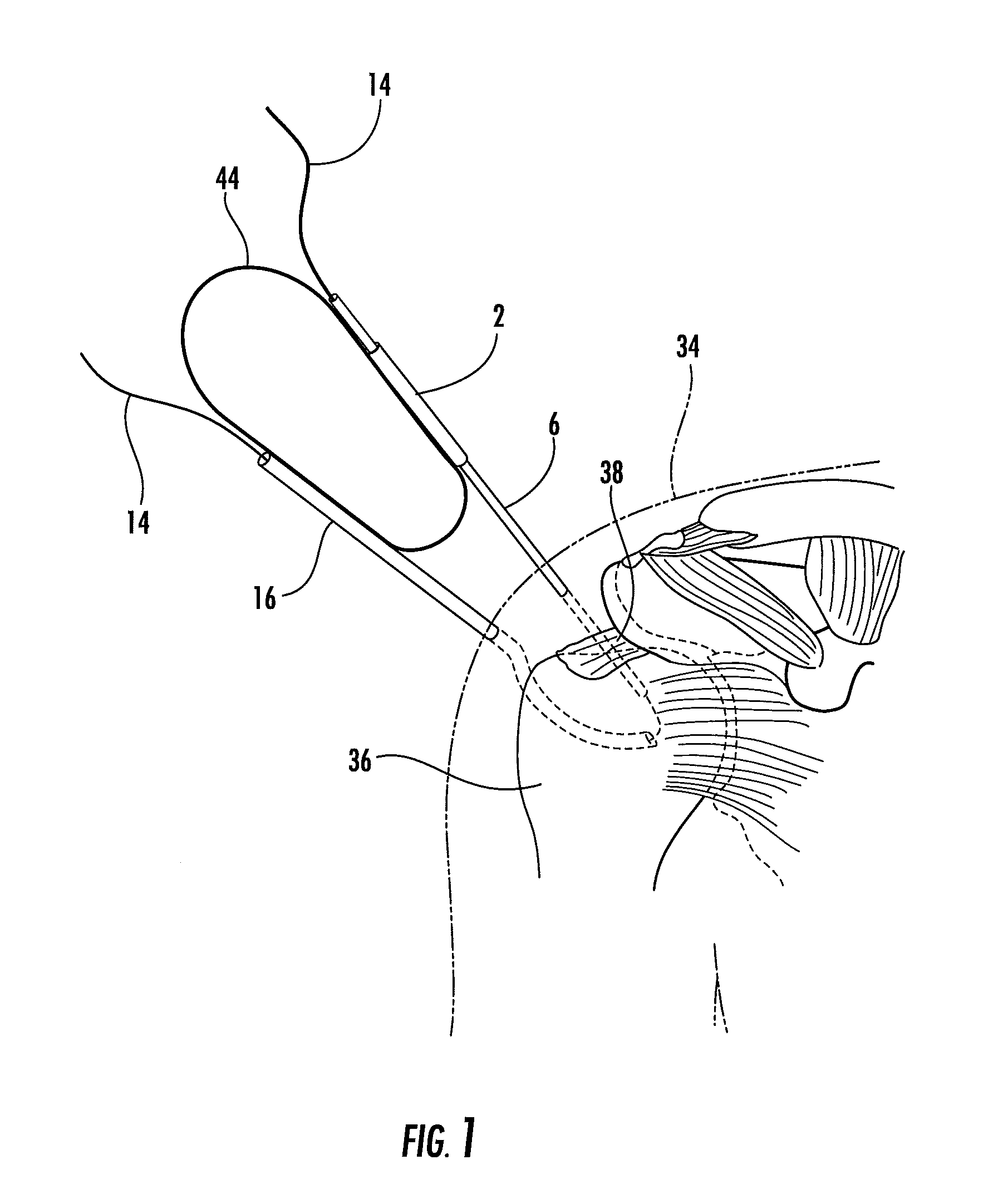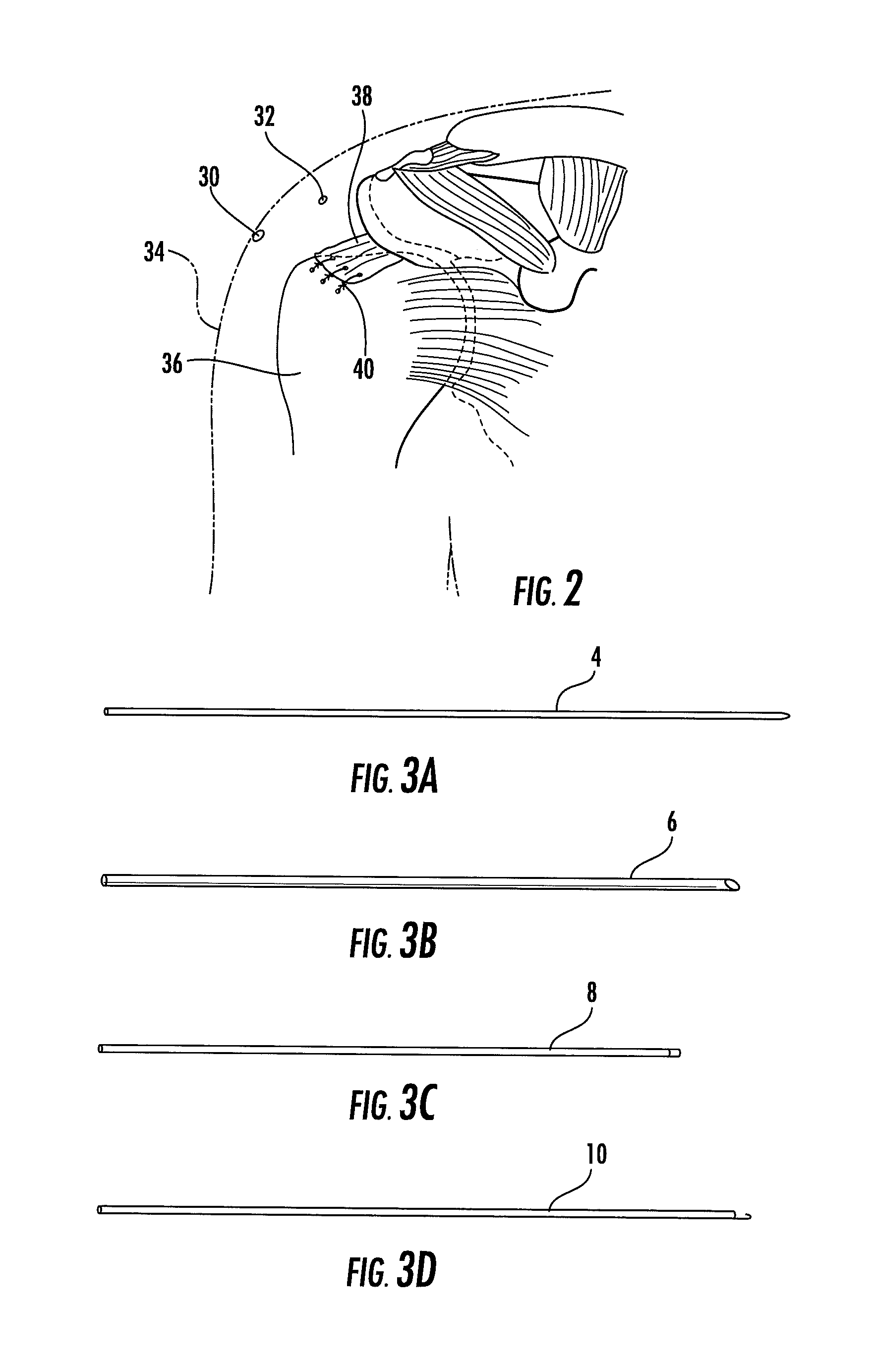Suture Passer and Subcortical Knot Placement
a subcortical knot and passer technology, applied in the field of suture passer and subcortical knot placement, can solve the problems of insufficient stiffness to push bone, marrow or other debris in a transosseous exchange, and the risk of migration of the suture anchor placed in the bone,
- Summary
- Abstract
- Description
- Claims
- Application Information
AI Technical Summary
Benefits of technology
Problems solved by technology
Method used
Image
Examples
Embodiment Construction
[0048]The present invention now will be described more fully hereinafter with reference to the accompanying drawings, in which preferred embodiments of the invention are shown. This invention may, however, be embodied in many different forms and should not be construed as limited to the embodiments set forth herein; rather, these embodiments are provided so that this disclosure will be through and complete, and will fully convey the scope of the invention to those skilled in the art.
[0049]Referring now to the drawings there is shown in FIG. 1 a handle 44 that is used to maintain drill guides 2 and 16 at relative angles for the arthroscopic formation of tunnels. Two arthroscopic portals 30, 32 (shown in FIG. 2) are formed in the shoulder 34, such as by a scalpel. The humeral head 36 and rotator cuff tendons 38 are present. A stand of suture material 14 is shown passing through the drill guide, rotator cuff tissue, into and out of the humeral head, and exiting the central lumen of the...
PUM
 Login to View More
Login to View More Abstract
Description
Claims
Application Information
 Login to View More
Login to View More - R&D
- Intellectual Property
- Life Sciences
- Materials
- Tech Scout
- Unparalleled Data Quality
- Higher Quality Content
- 60% Fewer Hallucinations
Browse by: Latest US Patents, China's latest patents, Technical Efficacy Thesaurus, Application Domain, Technology Topic, Popular Technical Reports.
© 2025 PatSnap. All rights reserved.Legal|Privacy policy|Modern Slavery Act Transparency Statement|Sitemap|About US| Contact US: help@patsnap.com



